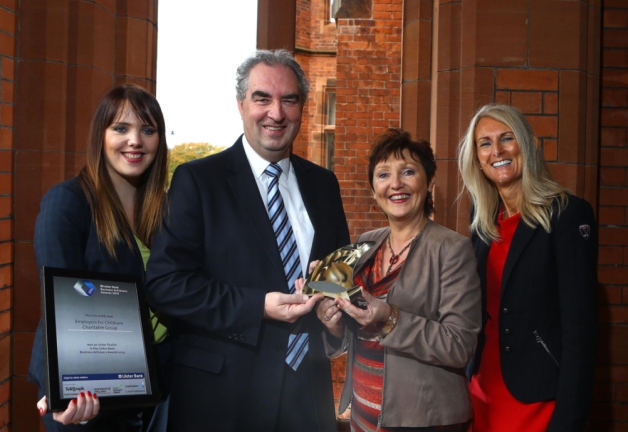Government Grants
Business Grants
Home Owner Programs
Federal Programs
About Us
BLM-WO, SUPPORT OF THE SCIENCE, EDUCATION, AND PRACTICE OF FORESTRY
The purpose of modification 000001 is to extend the period of performance from 24 May 2016 to 29 July 2016 all other terms and conditions remain unchanged.
************************************************************BACKGROUND:
The BLM is responsible for approximately 58 million acres of forests and woodlands.
These forests range from the boreal forest in Alaska to the pinyon-juniper woodlands of the southwest and from the Pacific Coast temperate rain forests to the Rocky Mountain forest types.
Stewardship of these forest resources in accordance with the multiple-use mission of the Federal Land Policy and Management Act of 1976 (FLPMA) necessitates that the BLM maintains and promotes professionalism among its forester workforce as well as supporting partnerships in the management of these public lands.
The BLM is seeking to continue its partnership with the Society of American Foresters (SAF) in support of its mission of providing training and educational opportunities to foresters, public outreach and education in forest management issues and programs, and promotion of diversity and best practices within the profession through its annual national forester convention.
OBJECTIVES:
1) Support training and educational opportunities for foresters to promote their professional development.
2) Support efforts within the forestry community to discuss and address issues, such as active forest management and how it relates to catastrophic wildfire, endangered species conservation, and public education regarding forestry challenges.
3) Support cooperation on regional forestry issues such as pinyon-juniper management and its relation to sage grouse habitat treatments.
PUBLIC BENEFIT:
Forestry professionals at the Federal, State, regional, and local levels play a critical role in developing and promoting positive impacts on forest management, sustainable use, and resource conservation.
Facilitated by the SAF, cooperation among forestry organizations, both public and private, leads to efficiencies that benefit forest resource as a whole.
Improved watershed health and quality over the last several decades is a direct result of the forestry profession developing best management practices in reducing run-off from sustainable harvesting and forest management operations.
Public education on the topics of conservation and sustainable use of forest resources and professional development of foresters is a long-term investment in protecting and maintaining our nation's forests and environmental wellbeing.
The public at large benefits not only from the availability of continued enjoyment of America's forests, but also from the long-term positive effects, such as improved water quality, borne out of foresters' informed and professional management.
************************************************************BACKGROUND:
The BLM is responsible for approximately 58 million acres of forests and woodlands.
These forests range from the boreal forest in Alaska to the pinyon-juniper woodlands of the southwest and from the Pacific Coast temperate rain forests to the Rocky Mountain forest types.
Stewardship of these forest resources in accordance with the multiple-use mission of the Federal Land Policy and Management Act of 1976 (FLPMA) necessitates that the BLM maintains and promotes professionalism among its forester workforce as well as supporting partnerships in the management of these public lands.
The BLM is seeking to continue its partnership with the Society of American Foresters (SAF) in support of its mission of providing training and educational opportunities to foresters, public outreach and education in forest management issues and programs, and promotion of diversity and best practices within the profession through its annual national forester convention.
OBJECTIVES:
1) Support training and educational opportunities for foresters to promote their professional development.
2) Support efforts within the forestry community to discuss and address issues, such as active forest management and how it relates to catastrophic wildfire, endangered species conservation, and public education regarding forestry challenges.
3) Support cooperation on regional forestry issues such as pinyon-juniper management and its relation to sage grouse habitat treatments.
PUBLIC BENEFIT:
Forestry professionals at the Federal, State, regional, and local levels play a critical role in developing and promoting positive impacts on forest management, sustainable use, and resource conservation.
Facilitated by the SAF, cooperation among forestry organizations, both public and private, leads to efficiencies that benefit forest resource as a whole.
Improved watershed health and quality over the last several decades is a direct result of the forestry profession developing best management practices in reducing run-off from sustainable harvesting and forest management operations.
Public education on the topics of conservation and sustainable use of forest resources and professional development of foresters is a long-term investment in protecting and maintaining our nation's forests and environmental wellbeing.
The public at large benefits not only from the availability of continued enjoyment of America's forests, but also from the long-term positive effects, such as improved water quality, borne out of foresters' informed and professional management.
Obtain Full Opportunity Text:
Click on the RELATED DOCUMENTS tab above to retrieve the Full Announcement and Application Instructions.
Additional Information of Eligibility:
Eligible applicants are individuals who have a nationally recognized research portfolio and considerable expertise in their area of proposed research.
They should be willing to commit a substantial portion of their time over at least a 12-month period to undertake analyses of BJS data or statistical programs and produce at least one publishable-quality report summarizing their analysis.
Full Opportunity Web Address:
Contact:
Agency Email Description:
Agency Email:
ebell@blm.gov
Date Posted:
2016-03-25
Application Due Date:
2016-07-29
Archive Date:
2017-09-05
Social Entrepreneurship
Spotlight
Childcare Charitable Group Named Top Social Enterprise

Employers For Childcare Charitable Group (EFCG), a Lisburn-based charity, has been crowned top Social Enterprise at the Ulster Final of 2014’s Ulster Bank Business Achievers Awards. EFCG seeks to “make it easier for parents with dependent children to get into work and to stay in work.”
